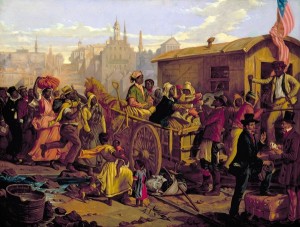I primarily looked at the Indigenous Peoples of North America project and oldweather.org for reflection from the course’s archive. I was struck by the effect of good graphic design on the experience of digital humanities research, beyond the fundamental organization of the site, visual appeal comprises a surprisingly large compone

nt of digital humanities. The Indigenous Peoples of North America project was especially compelling in its visual layout. The search function was especially important, in the Indigenous Peoples project, the search results allow users to go through document pages and metadata within the thumbnail view. The ability to view full citations and search through tags and keywords are very well managed on the Indigenous People’s project. The project organizes thousands early 19 to 20th century documents and photographs, monographs and newspapers1 in a way where users can search by location, subject. Search functions represent one of the major advantages of digital artifacts. Databases containing millions of dates, people and subjects can be parsed within seconds. This ability was in the most-part unavailable before the information revolution. Multimedia is also one of the advantages of digital artifacts. Users can experience an artifact through detailed imagery and simultaneously listen to audio or narrated material. The Indigenous Peoples project especially contains a feature where selected text can be read by a computer generated voice.
While most digital humanities projects are created by experts and researchers, some harness one of the Internet’s greatest powers, the wisdom of the crowd. Old Weather aims to help scientists determine mid-19th century Arctic and worldwide weather observation by having users transcribe ship logs. Users can pick vessels and journeys to transcribe logs and collaborate with other users across the globe. The project has completed 39% of logs and has transcribed 63,125 pages. The size of this project demonstrates the things that crowdsourced digital archives can do, transcribing thousands of pages without the need for hundreds of researches.

While there are many huge advantages to digital artifacts, some very key aspects are still better with physical artifacts. The presence of an on-call expert or curator is an improvement over a stagnant website. Physical objects are often hugely complex and details often unseen in digital documents can emerge.

